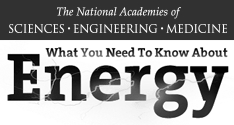
What You Need To Know About Energy
What do you know about energy?
The consumption of energy worldwide is projected to rise by how much between 2013 and 2040?
-
Sorry, that’s incorrect.
U.S. energy consumption is projected to rise 9% by 2040, or 0.3% per year, while global consumption will increase about 50% over the same period
-
Sorry, that’s incorrect.
U.S. energy consumption is projected to rise 9% by 2040, or 0.3% per year, while global consumption will increase about 50% over the same period
-
Sorry, that’s incorrect.
U.S. energy consumption is projected to rise 9% by 2040, or 0.3% per year, while global consumption will increase about 50% over the same period
-
Sorry, that’s incorrect.
U.S. energy consumption is projected to rise 9% by 2040, or 0.3% per year, while global consumption will increase about 50% over the same period
-
Correct!
U.S. energy consumption is projected to rise 9% by 2040, or 0.3% per year, while global consumption will increase about 50% over the same period
True or false? Hydraulic fracturing and horizontal drilling have increased oil and gas production in the U.S.
-
Correct!
Extraction of "tight" oil—light crude oil contained in geological formations of shale or sandstone—accounted for only 12% of total U.S. oil production in 2008. By 2012, it made up 35%, and is predicted to rise to 50% in the near term.
-
Sorry, that’s incorrect.
Extraction of "tight" oil—light crude oil contained in geological formations of shale or sandstone—accounted for only 12% of total U.S. oil production in 2008. By 2012, it made up 35%, and is predicted to rise to 50% in the near term.
Which of the following is emitted by coal-fired power plants?
-
Sorry, that’s incorrect.
All of the above are emitted from coal-fired power plants and can be harmful to our health and the environment.
-
Sorry, that’s incorrect.
All of the above are emitted from coal-fired power plants and can be harmful to our health and the environment.
-
Sorry, that’s incorrect.
All of the above are emitted from coal-fired power plants and can be harmful to our health and the environment.
-
Sorry, that’s incorrect.
All of the above are emitted from coal-fired power plants and can be harmful to our health and the environment.
-
Correct!
All of the above are emitted from coal-fired power plants and can be harmful to our health and the environment.
In 2014, what percentage of the United States' total energy consumption came from oil?
-
Sorry, that’s incorrect.
In 2014, the United States got 35% of its energy from petroleum, and experts project that demand for this fuel will rise at least through 2020.
-
Sorry, that’s incorrect.
In 2014, the United States got 35% of its energy from petroleum, and experts project that demand for this fuel will rise at least through 2020.
-
Sorry, that’s incorrect.
In 2014, the United States got 35% of its energy from petroleum, and experts project that demand for this fuel will rise at least through 2020.
-
Correct!
In 2014, the United States got 35% of its energy from petroleum, and experts project that demand for this fuel will rise at least through 2020.
How many gallons of water are required to hydraulically fracture a well, on average in the U.S.?
-
Sorry, that’s incorrect.
The national average is around 1.5 million gallons per well , according to the EPA.
-
Sorry, that’s incorrect.
The national average is around 1.5 million gallons per well , according to the EPA.
-
Sorry, that’s incorrect.
The national average is around 1.5 million gallons per well , according to the EPA.
-
Correct!
The national average is around 1.5 million gallons per well , according to the EPA.
True or False: Burning coal in electric power plants is a major source of CO2 and other emissions. However, its use doesn't have negative consequences beyond the emissions caused by combustion.
-
Sorry, that’s incorrect.
Mining coal disturbs the land and modifies the chemistry of rainwater runoff, which in turn affects stream and river water quality.
-
Correct!
Mining coal disturbs the land and modifies the chemistry of rainwater runoff, which in turn affects stream and river water quality.
How are battery electric vehicles and hybrid vehicles different?
- Battery electric vehicles receive charge from the electric grid, and hybrid vehicles do not.
- Hybrid vehicles have a gasoline engine and an electric motor that can supplement drive. Battery electric vehicles only have an electric motor.
- Hybrid vehicles consume petroleum onboard when the battery is exhausted. Battery electric vehicles do not consume petroleum onboard.
- Battery electric vehicles emit no carbon dioxide. Hybrid vehicles do emit carbon dioxide
- C and D
-
Sorry, that’s incorrect.
Battery electric vehicles have only a motor and battery, they recharge from the grid and their carbon emissions depend on the energy used to generate the electricity they use. Hybrid vehicles have both a gasoline engine and an electric motor, and use petroleum onboard when their batteries are exhausted. Some hybrid vehicles can charge from the grid and others cannot.
-
Sorry, that’s incorrect.
Battery electric vehicles have only a motor and battery, they recharge from the grid and their carbon emissions depend on the energy used to generate the electricity they use. Hybrid vehicles have both a gasoline engine and an electric motor, and use petroleum onboard when their batteries are exhausted. Some hybrid vehicles can charge from the grid and others cannot.
-
Sorry, that’s incorrect.
Battery electric vehicles have only a motor and battery, they recharge from the grid and their carbon emissions depend on the energy used to generate the electricity they use. Hybrid vehicles have both a gasoline engine and an electric motor, and use petroleum onboard when their batteries are exhausted. Some hybrid vehicles can charge from the grid and others cannot.
-
Sorry, that’s incorrect.
Battery electric vehicles have only a motor and battery, they recharge from the grid and their carbon emissions depend on the energy used to generate the electricity they use. Hybrid vehicles have both a gasoline engine and an electric motor, and use petroleum onboard when their batteries are exhausted. Some hybrid vehicles can charge from the grid and others cannot.
-
Correct!
Battery electric vehicles have only a motor and battery, they recharge from the grid and their carbon emissions depend on the energy used to generate the electricity they use. Hybrid vehicles have both a gasoline engine and an electric motor, and use petroleum onboard when their batteries are exhausted. Some hybrid vehicles can charge from the grid and others cannot.
What percentage of commercial building energy is used by schools?
-
Sorry, that’s incorrect.
School buildings represent 13% of commercial buildings energy use, or about 2.5% of total U.S. energy use (13% × 19%).
-
Sorry, that’s incorrect.
School buildings represent 13% of commercial buildings energy use, or about 2.5% of total U.S. energy use (13% × 19%).
-
Correct!
School buildings represent 13% of commercial buildings energy use, or about 2.5% of total U.S. energy use (13% × 19%).
-
Sorry, that’s incorrect.
School buildings represent 13% of commercial buildings energy use, or about 2.5% of total U.S. energy use (13% × 19%).
What technology was most responsible for increase in lighting efficiency from 45 Im/W in 2001 to 58 Im/W in 2010?
- Increase in efficiency of incandescent light bulbs
- Increase in efficiency of candles
- Increase use of compact fluorescent lights
- Increased use of LED lights
-
Sorry, that’s incorrect.
Increasing market share of compact fluorescents was primarily responsible for the increased lighting efficiency between 2001 and 2010.
-
Sorry, that’s incorrect.
Increasing market share of compact fluorescents was primarily responsible for the increased lighting efficiency between 2001 and 2010.
-
Correct!
Increasing market share of compact fluorescents was primarily responsible for the increased lighting efficiency between 2001 and 2010.
-
Sorry, that’s incorrect.
Increasing market share of compact fluorescents was primarily responsible for the increased lighting efficiency between 2001 and 2010.
Thank you for taking our quiz.
Place this badge on your facebook page to show your friends what you know about energy.
Place this badge on your facebook page to show your friends what you know about energy.
Place this badge on your facebook page to show your friends what you know about energy.
Explore Other Topics
Energy Hands-on
Understanding Efficiency
Learn the significance of energy efficiencyThe Promise of Better Lighting
Energy savings through lighting technologyOur Energy System
A visualization of all our energy sourcesEnergy Defined
- Energy Conversion
The transformation of energy from one form to another. For example, when coal (chemical energy) is burned, it produces heat (thermal energy) that is then captured and used to turn a generator (mechanical energy), which transforms the energy into electricity (electrical energy).




